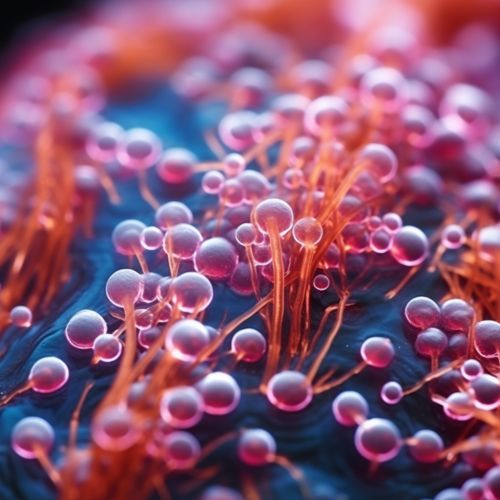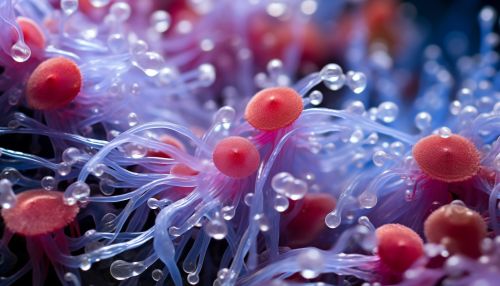Pseudomonas syringae
Overview
Pseudomonas syringae is a rod-shaped, Gram-negative bacterium with polar flagella. As a ubiquitous plant pathogen, it can infect a wide range of host plants and induce various symptoms, ranging from leaf spots to cankers. The bacterium is also known for its ability to promote ice formation at relatively high temperatures, a feature that has implications in cloud formation and precipitation.


Taxonomy and Identification
Pseudomonas syringae belongs to the Pseudomonadaceae family and the Pseudomonas genus, which is known for its metabolic versatility and environmental adaptability. The species is further divided into over 60 pathovars based on their pathogenicity towards specific plant hosts.
Biology and Ecology
Pseudomonas syringae is primarily an epiphyte, meaning it lives on the surface of plants, particularly on the leaves. It can survive in a latent state in the plant's phyllosphere, the region encompassing the above-ground parts of the plant, until conditions become favorable for infection.
Pathogenicity and Disease Symptoms
Pseudomonas syringae causes a variety of diseases in plants, including bacterial speck, bacterial canker, and bacterial blight. The symptoms vary depending on the host plant and the specific pathovar of the bacterium.
Ice Nucleation Activity
One of the unique features of Pseudomonas syringae is its ability to act as an ice nucleus, meaning it can catalyze the formation of ice crystals at temperatures above the normal freezing point of water. This feature is due to the presence of ice-nucleation proteins on the bacterial cell surface.
Control and Management
Control of Pseudomonas syringae in agricultural settings typically involves a combination of cultural practices, chemical treatments, and biological control methods.
Genomics
The genome of Pseudomonas syringae has been sequenced, providing valuable insights into its pathogenicity mechanisms and its adaptation to various environmental conditions.
Impact on Agriculture
Pseudomonas syringae is a significant agricultural pathogen, causing diseases in a wide range of crops and ornamental plants worldwide.
